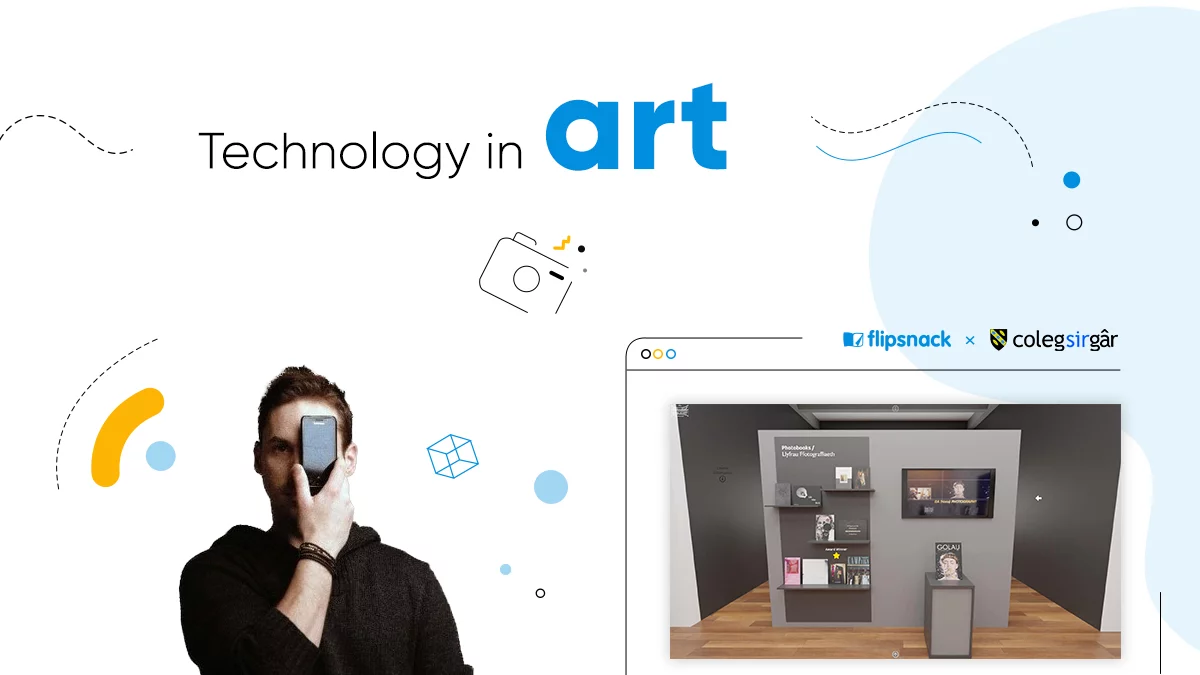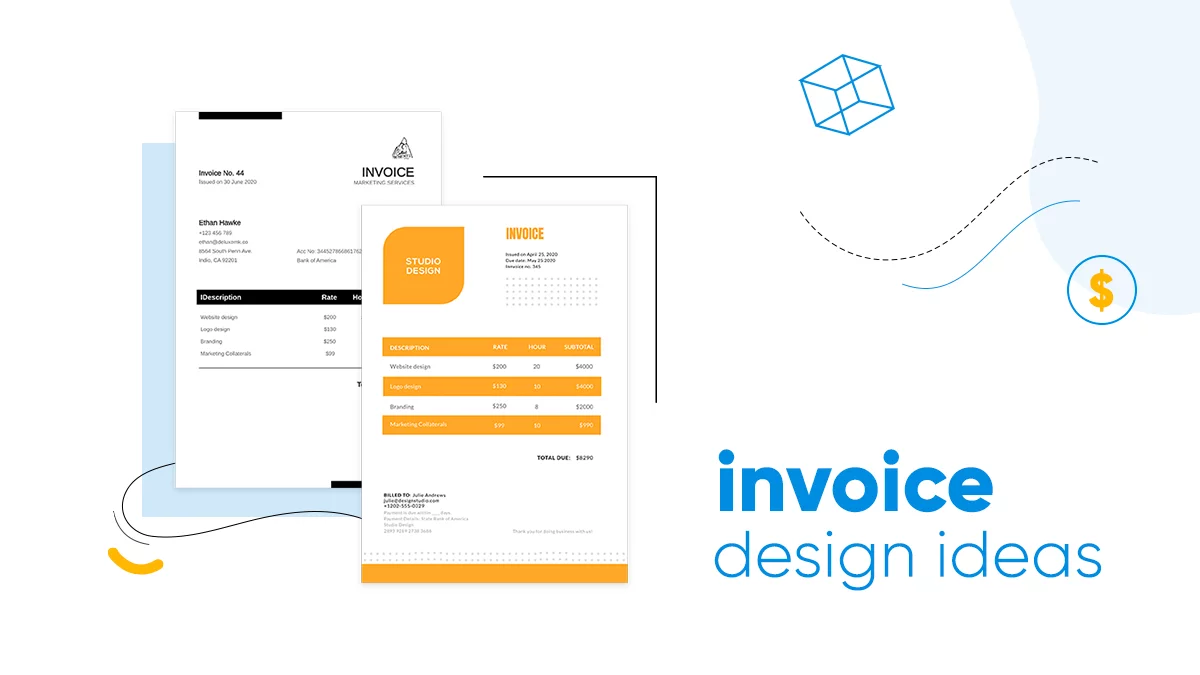Flipsnack, a solution for using technology in art
Canvases look more digitized, colors more pixelated, technology in art has become more than just an option. For some time now, we are in the presence of what could be called a second Renaissance in art. Using technology, the artist can offer a new perspective, a different lens through which we can see the world.

A relationship between art and technology exists as every artistic demeanor is continuously evolving. The scope of art is not that of answering questions, but of suspending judgments. Using technology in art doesn’t mean turning into a Brave New World. It can mean creating a virtual exhibition that doesn’t detract anything from the experience.
Flipsnack’s technology allows you, among others, to create a virtual bookshelf. Virtual is the key here. It mimics reality and it’s one click away. Conveying the organized look of a library on your display is one thing. But technology can be embraced in many other ways without diminishing its immersive quality.
Given our current worldwide pandemic situation, technology in art can be essential and its goals more than relevant. They are essential!
We talked with Huw Alden Davies from the Carmarthen School of Art, to see how they adapted to this year’s challenges and how art can benefit from new technologies. Along with Karl Sedgwick, which was the solution architect of this idea, and a team of inspired people, they managed to virtualize our artistic perception.
Theirs is an article about resistance and artistry in front of the limitations imposed by the pandemic. A live graduation show being out of the question; they had to adapt, be creative. Through the use of software and their invaluable imagination, they surpassed this difficulty.
You might ask, how can technology help in promoting art? A gateway has been opened, now let’s see how they did it.

1. Tell us more about your day to day work. How do you find education today?
While continuing to work as a photographer, I came into education almost ten years ago, thinking it would be a part-time gig, man how wrong I was.
I was one of those late bloomers finding my way back to college in my mid-twenties, where I started studying a degree in Photography, and that decision gave me a purpose and direction in life so I knew the advantage this can give someone. Education in the Arts really opens up your mind giving you a whole new perspective on life. It’s enlightening, liberating, and more importantly, it’s where you really connect with your creative side and I feel enormously privileged to be part of a learning environment where I learn as much as I teach.
2. With all the pandemic crisis and the entire world being on hold for a while, how did you keep your students engaged? Did you make any changes in your day to day educational process?
We knew this would be like nothing we had ever experienced, but we didn’t really wait around to think things through too much. It was a massive shock to the system initially, with the prospect that these guys would not finish the final year of their degree, or even get a show at the end of it. But there was only one way to deal with it, and that was head-on. We had a short window and we wanted our learners to have the show they deserved, and better.
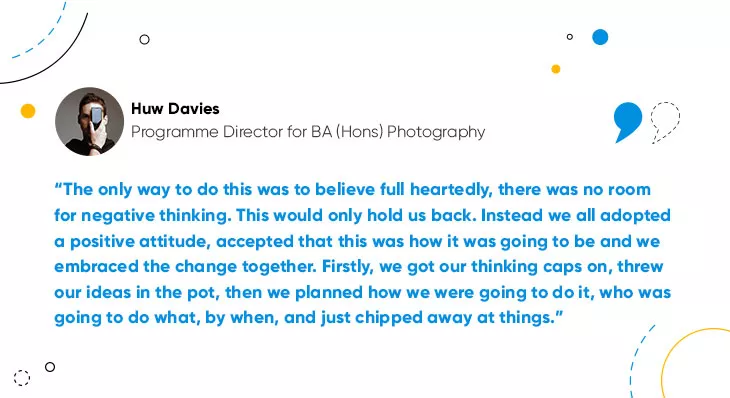
Any pandemic has the potential to disrupt even the most cohesive system. When confronted with an unknown enemy, it’s hard to find a sustainable solution. Nevertheless, standing on desolate grounds is not a solution. You must stay busy, try different methods, and cast away any negative attitude. Huw and his colleagues understood this.
Using technology in art and for communication, means being available.
As far as the changes go, our course became unrecognizable in the fact that online learning meant we became available day and night. This was not the most sustainable model for education in general, but these were different times and required different methods. So we made ourselves available for one-to-one tutorials and team meetings as much as humanly possible, using a variety of online communication tools. It also meant adopting a wide range of software to be as adaptive and innovative as possible in a situation that seemed so limiting.
3. The whole world is turning to a more digitized approach. How can art benefit from this approach?
It has always been going this way, and the art world has always been at the forefront. Its designers and innovators, embracing and developing every new challenge, new technologies, moving the industry forward. It was not that long ago photographers were saying that Digital Photography will never catch on, or it will never be as good as film. but the younger photographers didn’t see it this way, they saw the potential. Look at the photography industry now, post-Kodak.
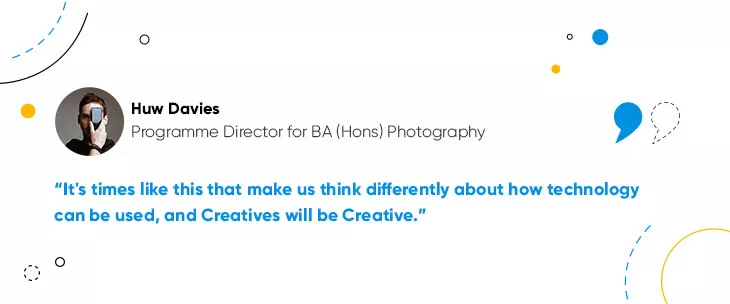
Indeed, climbing the Mount Parnassus of artistic expression means openness in the face of the unknown. Technology in art can provide a flashlight, a new path for Creatives to be Creative.

4. Do you think that the current events (i.e., lockdown, the whole pandemic situation) reflect in your student’s work?
As much as in any artist’s work made during the pandemic, we cannot avoid this idea and its influence on the artist’s views and the broader context of their makings. We will all see things differently from now on, and therefore we will see that in their work.
A photograph of a flower can no longer be a photograph of a flower or simply the representation of life, mortality, youth, love, or beauty. It is now all of those things and what they mean in a world filled unsafe to walk out your front door without a mask. To spend time with family, friends and loved ones without getting too close.

5. Due to the fact that you couldn’t organize a live Graduate Show, you had to adapt. How did it go?
As you can imagine, it was soul-crushing for those who had spent three years to get to this stage and then learned that there was not going to be a show. But once that sunk in, these guys knew they would have to find another way. There was some apprehension at first, which is only normal given the carpet had just been swiped out from under their feet. But once we got going there was no stopping this thing.
Besides finishing projects, or even starting NEW ones in some cases, they also pooled together to develop a Graduate magazine, writing articles and developing promotional content while designing and producing their own unique photo books, which have become one of the highlights of our VR Exhibition.
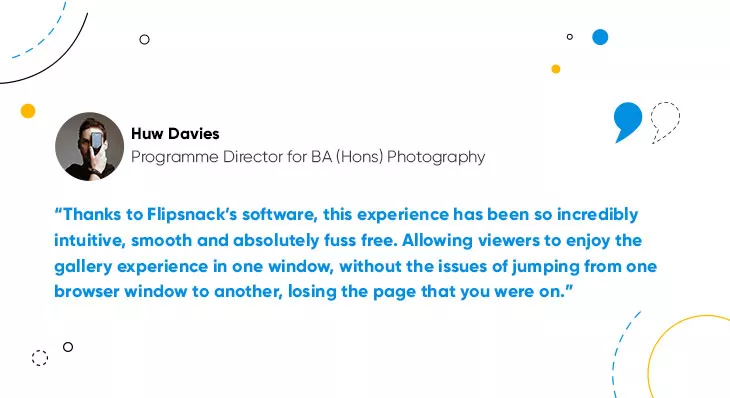
Facing the harsh idea that the world may not see your work is devastating. But through resilience and imagination, they designed a whole exhibition and then used Flipsnack to add color to it.
By creating virtual bookshelves filled with magazines and photo albums, Karl and Huw not only saved the exhibition, but they also released the Kraken. Their artistic vision became available to the world. Material limitations don’t stand a chance against human ingenuity, right?
With the help of our software, they presented their work beautifully, as a new age exhibition.
6. Art usually requires participation on the part of the observer. Nevertheless, you managed to overcome these difficulties and offer a unique virtual experience. How will this translate into future exhibitions? Do you think online is the new medium of choice?
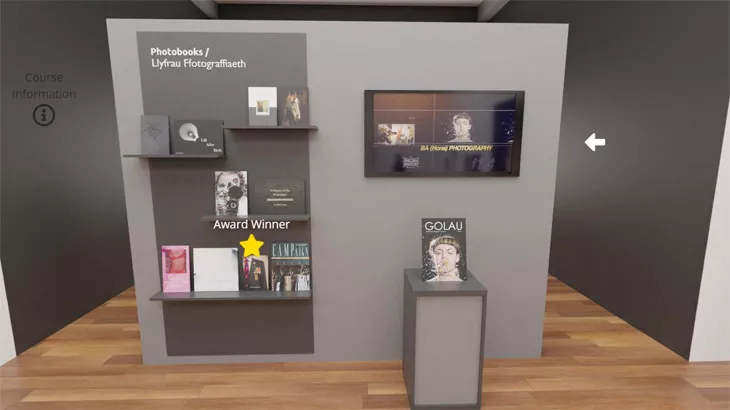
By embracing software such as Flipsnack or SeekBeek, and technologies such as VR and 360, we found that it helps eliminate people’s fear of technology. And the results have been nothing less than inspirational. We never imagined how successful this would be, on so many levels.
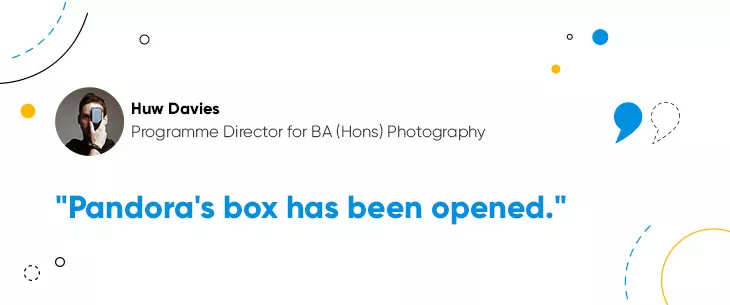
It will definitely change the way we work in education, without a doubt. This thing has torn down the walls, removing the limitations presented by reality. Allowing us to create bigger imaginative spaces, pushing our boundaries as learners and practitioners. All this while providing interactive spaces that are more rewarding to the viewer. It also is a fantastic way to demonstrate and market our courses, where we can now reach a much larger audience than ever before.
Conclusions
Tearing down the walls, breaking traditional perception and offering a new way to interact with art. These are extraordinary feats of strength! Implementing technology in art means that the world is leaping forward. They did it, and so should you.
Create virtual worlds, expositions, catalogs, fill those digital bookshelves with your ideas. Surpassing limitations is the goal of the digital age. Your art is now immediately shareable, translatable, relatable!
Technology in art is like Medusa’s gaze. Solidify your artwork by taking full advantage of technology and firmly stamp it into the world.
If reality is to be limited, then imagination certainly isn’t. It can be as simple as creating a magazine and displaying it as a bookshelf. Or as complex as putting together a photo album. Huw and Karl knew this and they delivered something spectacular. Using Flipsnack, you can do the same!
Whatever your intentions and artistic needs, technology has undoubtedly managed to fill the gap of knowledge. Tear down the mask of nature! It’s now up to you to look and tell us what you see.
